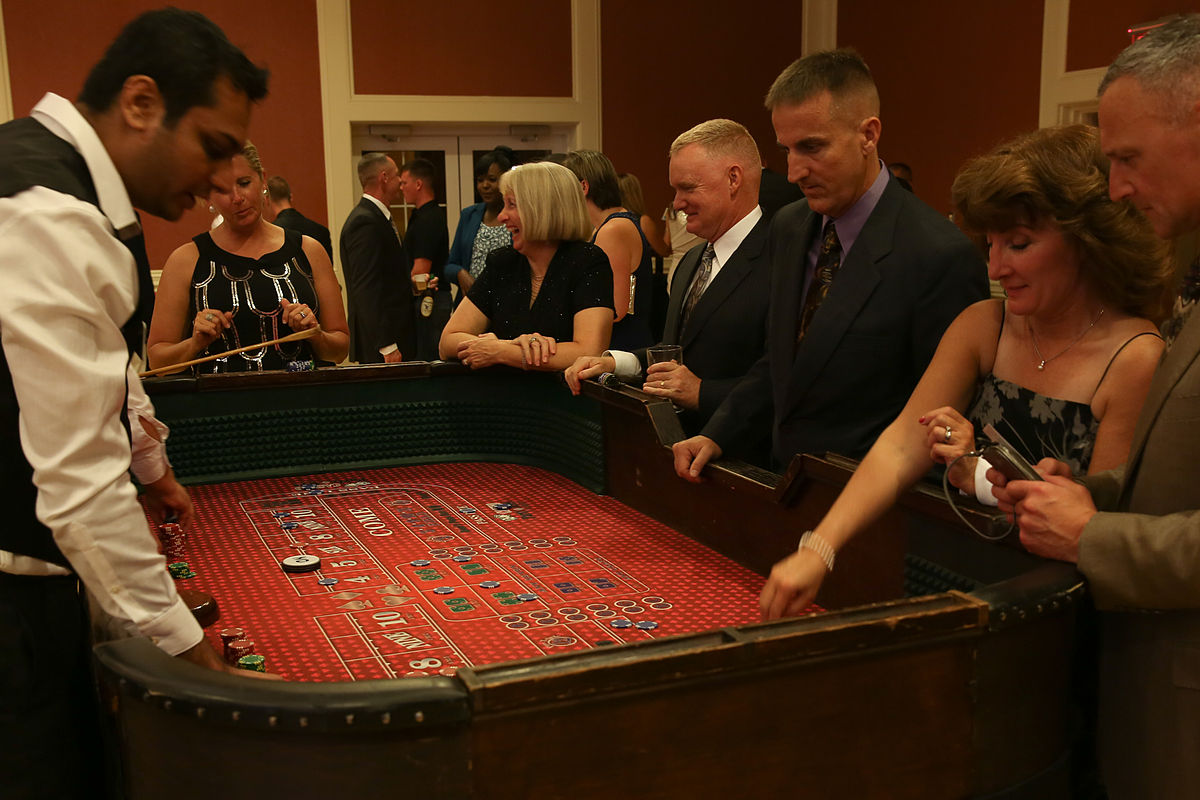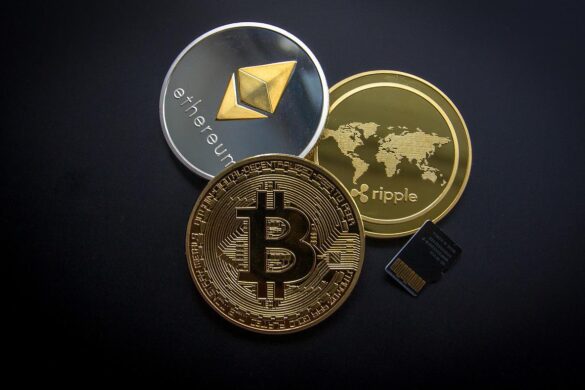The “Pop Culture Dress To Impress” gaming sensation has taken the world by storm. Players flocked to the platform with 118,000 concurrent users and an impressive 3 billion visits since its October 2023 debut. This remarkable success shows how entertainment and fashion have become increasingly intertwined, as demonstrated by 14 iconic outfits that shape today’s event fashion choices.
Pop culture’s influence on consumer behavior and business opportunities continues to grow. We see this through Barbie-inspired Halloween trends and Taylor Swift’s Era Tour fashion impact. The fashion industry has responded with 230 pattern options and runways themed from Sweet 16 to Visual Kei. These cultural references create valuable business opportunities and boost customer participation. This piece shows businesses how to leverage pop culture fashion trends to build lasting brand recognition.

The Business Value of Pop Culture Outfits
Pop culture references have turned into a goldmine for businesses that want to create memorable brand experiences. Recent studies show 28% of the world’s most successful enterprises like Coca-Cola, Burger King, and Nike have used pop culture references in their marketing campaigns. This connection with cultural trends benefits companies of all sizes as they find substantial returns from investing in pop culture outfits and style references.
Creating brand recognition through iconic styles
Brands create instant recognition that goes beyond traditional advertising by tapping into iconic pop culture styles. LVMH, the luxury powerhouse, saw this opportunity and created 22 Montaigne Entertainment. This platform helps producers connect with LVMH brands through a single contact point. The initiative goes beyond simple product placements to create compelling brand stories.
Brands build a powerful visual shorthand that customers recognize right away by adding cultural elements to their identity. Supreme shows this approach well. The company makes items that work more as art than clothing by using pop culture images and working with artists. Their strategy became a soaring win when Kanye West wore Supreme Blazer SBs at the Grammy Foundation Starry Night Party in 2007. This moment turned Supreme into today’s cultural phenomenon.
How pop culture references boost customer engagement
Pop culture references let brands build deeper connections with customers naturally. 64% of customers want brands to connect with them through social networks. This makes cultural relevance essential for modern marketing strategies. These connections go beyond transactions – they strike a chord emotionally and stay memorable.
Pop culture marketing brings several key advantages:
- Increased relatability: Pop culture references make brands more human and approachable. Customers trust brands they can identify with.
- Community building: Research shows 77% of respondents say pop culture experiences create lifelong memories, and 72% find these experiences offer an escape from the ordinary.
- Cross-generational appeal: Pop culture brings multiple generations together, creating a common link between different groups.
McDonald’s shows this approach through its work with pop music stars. The brand stays relevant despite health-conscious trends through collaborations with Travis Scott, J Balvin, and BTS. McDonald’s created experiences that customers wanted to copy by giving them a taste of their favorite celebrities’ lifestyle.
Measuring ROI on pop culture-inspired marketing
ROI calculations for pop culture marketing need more than traditional metrics. The basic formula (Total Revenue – Total Costs) / Total Costs) x 100 = ROI seems simple, but pop culture campaigns require detailed evaluation.
These approaches help measure success:
- Multi-touch attribution models give credit for sales across multiple touchpoints. This provides a complete view of how different activities contribute to revenue.
- Customer lifetime value (LTV) tracking shows the long-term value of customers who saw pop culture content before buying.
- Engagement metrics like likes, shares, comments, and retweets show how well campaigns connect with audiences.
Pop culture marketing affects every part of the customer’s experience. Brands can measure success through increased website traffic and social sharing rates for awareness campaigns. Email opens, click-through rates, and downloads show effectiveness at the conversion stage.
Social media gives excellent ROI potential for businesses that use pop culture. A fashion magazine found which pop culture references drove the strongest conversions by tracking social media URLs during free trial promotions.
Pop culture now shapes everything we see and do in our connected world. Businesses that become skilled at “dress to impress” through cultural references build lasting brand value that strikes a chord across generations.

Pop Culture DTI: Transforming Industry Fashion Trends
Pop culture has changed how fashion moves from exclusive runways to mainstream retail stores. This change goes beyond just looks. It represents one of the most important economic forces that alters how fashion brands work, grow and make money today.
From runway to retail: The economic impact
Pop culture’s economic effects on fashion cannot be ignored. Stylists in 2023 reported an astonishing 300% surge in client requests for maximalist “Barbie-inspired” outfits. This shows how cultural moments drive what people want to buy. Requests for “Quiet Luxury” grew by an incredible 975%. HBO’s Succession and other media showing understated wealth drove this trend.
These numbers reflect deep changes in how people shop. About 47% of female clients look to Margot Robbie’s real-life Barbie style for inspiration. Ryan Reynolds’ wardrobe influences 44% of male clients. Cultural icons shape what people buy.
The resale market shows how pop culture creates lasting value. The Sex and the City reboot’s second season helped Fendi’s Peekaboo bag keep 48% more of its value. The iconic Baguette saw a 34% increase. The “Barbie pink” trend pushed pink handbags to hold 81% of their value. Some Chanel bags even grew to 110% of their original price.
Fashion brands now build their business plans around pop culture’s power. Paris Fashion Week has evolved. Star power and social media-friendly events matter more than traditional craftsmanship. Brands invest heavily to create maximum cultural buzz.
Case studies: Successful pop culture fashion collaborations
Louis Vuitton and Supreme’s partnership shows how cultural relevance becomes commercial success. Their 2017 collaboration connected luxury fashion with streetwear. Select pop-up stores worldwide sold the collection. North American releases were canceled, which made people want the items even more.
H&M and Balmain created another effective partnership. Their 109-piece collection drew inspiration from celebrity style. Regular Balmain beaded dresses cost over $20,000. H&M versions cost between $500-$600. Supermodels Kendall Jenner and Gigi Hadid helped create huge excitement. People camped outside stores for days before the launch.
Moncler’s Genius Project changed how brands work together. Eight designers joined forces in 2018 to turn a traditional skiwear brand into a cultural force. New collaborations appeared every few months. Each collection kept Moncler’s signature down jackets while adding unique touches. Pierpaolo Piccioli made bold shapes. Craig Green broke down traditional designs into sculptural pieces.
Beyoncé’s Ivy Park and Adidas show how star power drives fashion success. As owner and creative director, Beyoncé built a brand that sells out within minutes. The collaboration works because it fits all sizes (XXXS-4X), offers gender-neutral designs, and uses celebrity PR packages for social media marketing.
These examples prove that pop culture fashion trends are not just passing fads. They are the foundations of new business strategies that change fashion through cultural connections.
Strategic Marketing Through Dress To Impress Pop Culture
Authentic cultural moments have become the life-blood of successful marketing campaigns. Smart brands don’t just follow trends – they create their own pop culture phenomena through carefully arranged dress to impress strategies.
Leveraging viral moments in advertising campaigns
Calvin Klein’s Jeremy Allen White underwear campaign shows the true power of pop culture DTI marketing. The campaign drove a remarkable 30 percent year-over-year increase in underwear sales just one week after launch. The numbers tell the story – it reached $12.70 million in media impact value within 48 hours. These results were nowhere near other campaigns like Bottega Veneta’s featuring Kendall Jenner, which reached only $2.80 million in the same period.
Celebrity endorsements alone don’t guarantee success. Brands need partnerships that balance perfect fit with unexpected elements. This strategy changes marketing from quick attention grabs into genuine cultural moments that drive conversations instead of just reacting to them.
Social media strategies for pop culture fashion content
Pop culture fashion content needs different approaches for different platforms:
- Instagram/TikTok: These visual platforms showcase latest designs through stunning visuals and short videos. TikTok especially rewards accounts that use trending audio clips from pop culture moments
- Memes: These shareable, relatable pieces help introduce pop culture content and test audience reactions
- Interactive elements: Quizzes, polls, and challenges boost engagement by turning passive viewers into active participants
Viral challenges have come a long way since 2014’s Ice Bucket Challenge. Fashion brands keep finding new ways to tap into these trends. Guess celebrated diverse body types with their #InMyDenim challenge on TikTok. The results spoke for themselves – 10.5 million video views and a 14.3 percent engagement rate in just six days.
Building community around shared cultural references
Pop culture dress to impress strategies build communities through shared cultural touchpoints. The game Dress to Impress proves this approach works. The game grew faster through developer-player relationships and smart celebrity collaborations. Charli XCX’s brat-themed outfit patterns helped the game reach a record 651,000 active users spike.
Smart brands know cultural branding isn’t about copying trends. The real magic happens when brands evolve social narratives and spark conversations about familiar topics. This approach creates a sense of belonging among customers and builds loyalty through real connections to cultural moments that appeal emotionally to audiences.
Entrepreneurial Opportunities in Pop Culture Fashion
The booming $3 trillion global fashion industry creates countless opportunities for entrepreneurs who want to tap into pop culture trends. Smart business owners now go beyond traditional retail. They turn cultural moments into profitable ventures through “dress to impress” concepts that strike a chord with today’s consumers.
Identifying market gaps for pop culture merchandise
Smart entrepreneurs find profitable niches in the pop culture dress market. The print-on-demand t-shirt industry serves as a perfect example. This sector should grow from $3.96 billion in 2021 to $7.57 billion by 2028. Purchase data shows that 70% of sales come from products less than 6 months old, which proves how vital trend-watching is.
The pop culture DTI space offers several promising opportunities:
- Customizable fashion lets consumers express their pop culture style
- Rental subscription services meet formal wear and special occasion needs
- Online boutiques sell exclusive limited-edition collections
- Short-term trend merchandise captures viral moments quickly
Timing makes all the difference in pop culture dress opportunities. The Black Dog pub’s story shows this perfectly. The London establishment launched a successful merchandise store right after Taylor Swift mentioned it in her song. Their quick action proved that businesses just need to “catch trends instantly” since “trends don’t live long”.
Licensing considerations for pop culture outfits
Licensing requirements are a vital part of entering the pop culture fashion space. These agreements work well for everyone involved. The licensor gets royalties while the brand benefits from co-branded promotions. Big names like Sally Hansen, Adidas, and Ben & Jerry’s have used this approach through strategic collaborations with brands from Crayola to Game of Thrones.
Entrepreneurs should know their legal limits. Many pop culture-inspired items sold without official licensing depend on fair use exceptions like parody or transformative works. Drawing Nintendo’s Mario in a “Banksy-style” or using splatter painting techniques might qualify as different enough.
Startup success stories in the cultural fashion space
Pop culture fashion has created some remarkable success stories. Two millennials started Bewakoof in 2012. Their e-commerce store now thrives by selling trendy apparel to 16-34 year-olds. Tony Kim’s passion for comic books led him to create Hero Within, a sophisticated fashion brand. His company later secured an official collaboration with DC Comics.
Sani brings another inspiring story. Niki and Ritika Shamdasani noticed South Asian culture appeared everywhere except fashion. They built a business that made history by launching at Nordstrom—the first South Asian clothing line to do so. These stories show how entrepreneurs can build soaring wins by spotting cultural gaps and acting fast to fill them.
Your Culture Dress To Impress: Building Brand Identity
TikTok views of the “office siren” esthetic have reached tens of millions. Modern workplace attire has changed a lot over the last several years. Companies looking to build a strong brand identity through pop culture dress to impress strategies need to understand how fashion choices show their values.
Lining up company values with cultural fashion choices
The workplace after the pandemic shows a major move away from strict dress codes. People now express themselves more freely. Gen Z workers have started wearing more comfortable clothes as remote and hybrid work became the norm. Organizations now have a chance to match their values with fashion choices that strike a chord culturally.
Research shows clothes do more than change how we look—they change how employees think and perform. The concept of “enclothed cognition” shows that work clothes can help staff feel and perform differently based on how their clothes match their role. So, companies benefit when their policies show cultural values while letting people express themselves.
Companies that want to adopt cultural fashion authentically should think about:
- Making sustainable workplace clothes a priority to show environmental awareness
- Adopting gender-fluid dress codes to promote inclusivity
- Creating capsule wardrobes with timeless, mix-and-match pieces
Making corporate events memorable with themed clothes
Pop culture DTI themes turn regular corporate gatherings into amazing experiences. “Fancy dress” stands out as one of the most memorable event themes because people get involved and participate. These themed gatherings make attendees more likely to enjoy themselves compared to standard corporate events.
Titanic-themed nights blend black-tie formality with fantasy elements perfectly. Post-apocalyptic wasteland themes really appeal to millennial audiences. Beyond just entertainment, themed events encourage team bonding and build stronger workplace relationships.
In spite of that, good planning matters. One event organizer noted that people wearing standard corporate clothes at themed events “stood out like Dogs Ba**s” and seemed more uncomfortable than coworkers who fully embraced the theme. Companies that ask staff to join in pop culture outfit themes end up creating more joy, value, and team spirit—building memorable experiences that strengthen their brand identity from within.
Conclusion
Pop culture dress trends have proven valuable beyond fashion statements. These trends are the foundations of business success and brand recognition. Companies that blend cultural references into their marketing strategies see substantial returns. Calvin Klein experienced a 30% sales increase while Supreme’s rise soared after mutually beneficial alliances with celebrities.
Consumer data tells a compelling story. People create lifelong memories through pop culture experiences 77% of the time. Brand connections through social networks matter to 64% of consumers. Major brands like McDonald’s, H&M, and Louis Vuitton show how cultural arrangements convert into measurable ROI. Their success comes from increased participation, brand loyalty, and higher sales.
Small businesses and entrepreneurs can benefit greatly from this trend. The global fashion industry, valued at $3 trillion, offers profitable opportunities. Success requires careful market analysis, licensing decisions, and quick responses to cultural moments. Authenticity remains crucial. Brands must build genuine audience connections while protecting intellectual property rights and maintaining consistency.
Companies that thoughtfully adopt pop culture dress strategies see improved corporate culture. Traditional rigid dress codes no longer work effectively. Teams form stronger bonds when their companies’ policies respect individual expression while embracing cultural trends.
Pop culture’s influence on fashion and business continues to grow steadily. Organizations that become skilled at cultural integration while staying true to their brand identity succeed in this ever-changing marketplace.
Here are some FAQs about pop culture dress to impress:
What is the Dress to Impress dress code?
The Dress to Impress dress code encourages stylish, fashionable outfits that showcase personal creativity and trend awareness. For pop culture dress to impress events, this means incorporating iconic looks from movies, music, TV shows, or celebrity styles. The goal is to create dress to impress pop culture outfits that reference beloved characters or trends while maintaining a polished, put-together appearance.
What is pop culture clothing?
Pop culture clothing refers to fashion inspired by current trends, celebrities, movies, TV shows, and music that dominate mainstream media. These pop culture outfits dress to impress by featuring recognizable elements from popular franchises or style icons. From superhero t-shirts to celebrity-inspired streetwear, pop culture fashion allows fans to express their interests through what they wear.
Why is everyone playing Dress to Impress?
Dress to Impress has become popular because it lets people experiment with fashion and pop culture dress to impress themes in a fun, low-pressure way. The game taps into our love of pop culture outfits dress to impress by allowing players to create digital versions of iconic looks or original stylish ensembles. It’s especially appealing in the age of social media where fashion and pop culture constantly intersect.
What’s a good theme for Dress to Impress?
An excellent theme for Dress to Impress is pop culture dress to impress outfits inspired by decades (90s, 80s), music genres, or specific franchises like Marvel or Harry Potter. Other great dress to impress theme pop culture ideas include “Met Gala inspired” or “celebrity red carpet looks.” These themes encourage creativity while keeping outfits recognizable and stylish.
What are the 7 codes in Dress to Impress?
While specific game mechanics vary, the core “codes” in Dress to Impress typically include: Formal, Casual, Party, Professional, Seasonal, Thematic (like dress to impress theme pop culture), and Creative/Avant-Garde. These categories help players explore different fashion directions, with pop culture dress to impress outfits often falling under the Thematic or Creative codes for maximum visual impact.
Who made the Dress to Impress?
Dress to Impress was created by developers who wanted to combine fashion creativity with pop culture dress to impress possibilities in a digital format. The game builds on the popularity of dress-up games but adds modern elements like sharing outfits on social media and incorporating current pop culture outfits dress to impress trends that players love.
What does pop culture look like?
Pop culture visually manifests through trends like pop culture dress to impress outfits seen on celebrities, meme-inspired clothing, or character merchandise from popular shows. It’s a constantly evolving mix of colors, logos, and styles that reference current movies, music, internet trends, and fashion movements. These dress to impress pop culture elements make their way from screens to streets quickly.
Why are jeans pop culture?
Jeans became pop culture staples because they’ve been worn by countless celebrities, musicians, and movie characters in iconic pop culture dress to impress moments. From James Dean’s rebellious 1950s look to modern celebrity street style, jeans represent versatility in pop culture outfits dress to impress. Their evolution through decades reflects changing attitudes, making them timeless yet always current pop culture fashion.
What is the slang pop culture?
Slang pop culture refers to trendy phrases and terms originating from music, movies, social media, and internet culture that quickly enter mainstream conversation. This linguistic fashion is the verbal equivalent of pop culture dress to impress outfits – constantly refreshing to stay relevant. Terms like “slay,” “extra,” or “stan” began as niche slang but became pop culture vocabulary through widespread use in media and everyday life.









